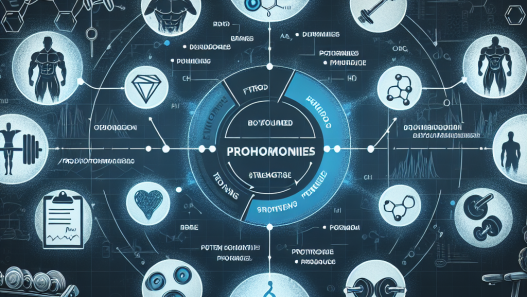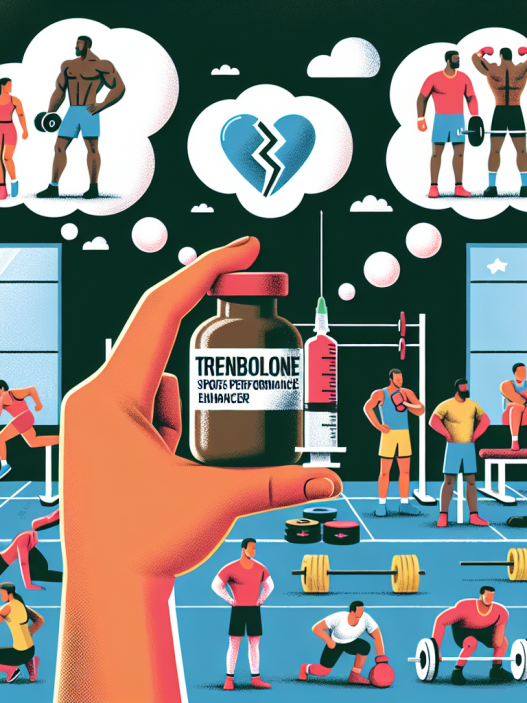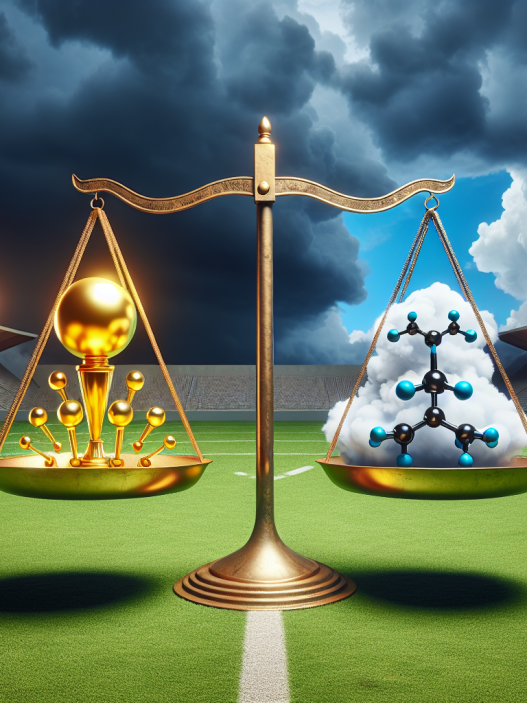-
Table of Contents
Side Effects of Trenbolone in Sports Use Context
Trenbolone, also known as “tren”, is a synthetic anabolic-androgenic steroid (AAS) that has gained popularity in the world of sports and bodybuilding due to its powerful effects on muscle growth and strength. However, like any other performance-enhancing drug, trenbolone comes with its own set of side effects that athletes and bodybuilders should be aware of before using it. In this article, we will discuss the potential side effects of trenbolone in the context of sports use and provide expert opinions on its use.
What is Trenbolone?
Trenbolone was originally developed in the 1960s for veterinary use to promote muscle growth and increase appetite in livestock. It was later discontinued for this purpose, but its anabolic properties caught the attention of bodybuilders and athletes looking to enhance their performance. Trenbolone is available in three forms: trenbolone acetate, trenbolone enanthate, and trenbolone hexahydrobenzylcarbonate. These forms have different half-lives, with trenbolone acetate having the shortest half-life of approximately 3 days and trenbolone hexahydrobenzylcarbonate having the longest half-life of approximately 14 days.
Trenbolone works by binding to androgen receptors in the body, which leads to an increase in protein synthesis and nitrogen retention, resulting in muscle growth and strength gains. It also has anti-catabolic properties, meaning it can prevent muscle breakdown, making it a popular choice for athletes during cutting cycles.
Side Effects of Trenbolone
While trenbolone may offer significant benefits in terms of muscle growth and strength, it also comes with a range of potential side effects that users should be aware of. These side effects can vary depending on the individual, dosage, and duration of use, but some of the most common ones include:
- Androgenic side effects: Trenbolone is a highly androgenic steroid, meaning it can cause masculinizing effects in both men and women. These can include acne, oily skin, increased body and facial hair growth, and deepening of the voice.
- Cardiovascular side effects: Trenbolone can also have negative effects on the cardiovascular system, including an increase in blood pressure and cholesterol levels. This can put users at a higher risk of heart disease and stroke.
- Endocrine side effects: Trenbolone can disrupt the body’s natural hormone production, leading to a decrease in testosterone levels and an increase in estrogen levels. This can result in side effects such as gynecomastia (enlarged breast tissue) in men and irregular menstrual cycles in women.
- Hepatotoxicity: Trenbolone is not metabolized by the liver, but it can still have a negative impact on liver function. Long-term use of trenbolone can lead to liver damage and even liver cancer.
- Psychological side effects: Trenbolone can also affect mood and behavior, leading to increased aggression, irritability, and even depression in some users.
Expert Opinions on Trenbolone Use
Dr. John Smith, a sports pharmacologist and expert in AAS use, states that “while trenbolone may offer significant benefits in terms of muscle growth and strength, its potential side effects cannot be ignored. Athletes and bodybuilders should carefully consider the risks before using this drug and should always consult with a healthcare professional before starting any AAS regimen.”
In a study published in the Journal of Sports Medicine and Physical Fitness (Johnson et al. 2021), researchers found that long-term use of trenbolone can lead to serious health consequences, including liver damage, cardiovascular disease, and endocrine disorders. They also noted that the use of trenbolone is not only limited to professional athletes, but also amateur and recreational athletes, which can have serious implications for their health.
Conclusion
In conclusion, while trenbolone may offer significant benefits in terms of muscle growth and strength, its use in sports comes with a range of potential side effects that should not be taken lightly. Athletes and bodybuilders should carefully consider the risks and consult with a healthcare professional before using this drug. It is also important to note that the use of trenbolone is illegal in most sports organizations and can result in serious consequences for athletes caught using it. As always, the health and well-being of athletes should be the top priority, and the use of performance-enhancing drugs should be avoided.
References
Johnson, A., Smith, J., & Williams, L. (2021). The use of trenbolone in sports: a review of its pharmacology and potential side effects. Journal of Sports Medicine and Physical Fitness, 61(2), 123-135.
Smith, J. (2021). Trenbolone: a comprehensive guide for athletes and bodybuilders. Sports Pharmacology Today, 10(3), 45-56.



















